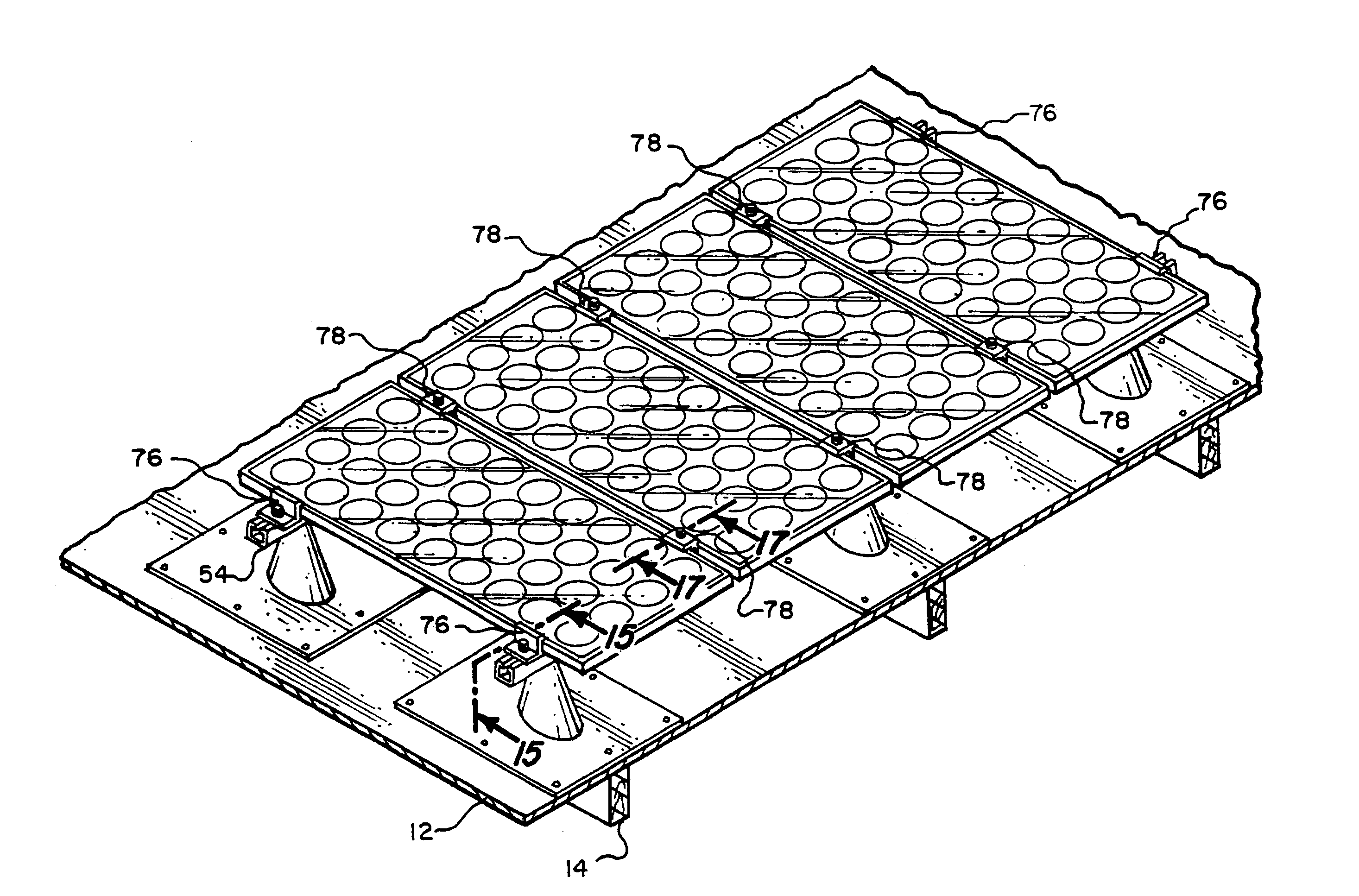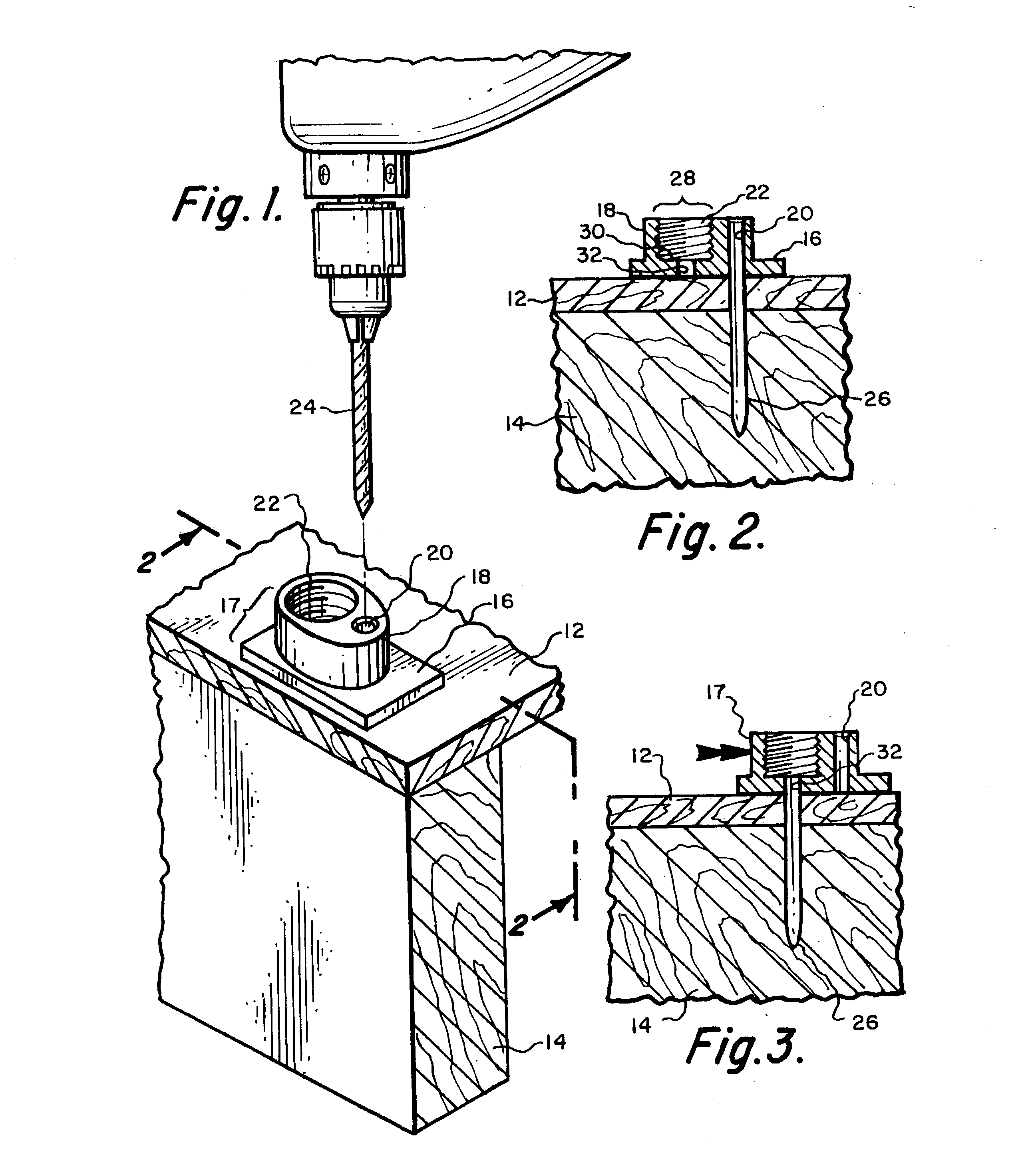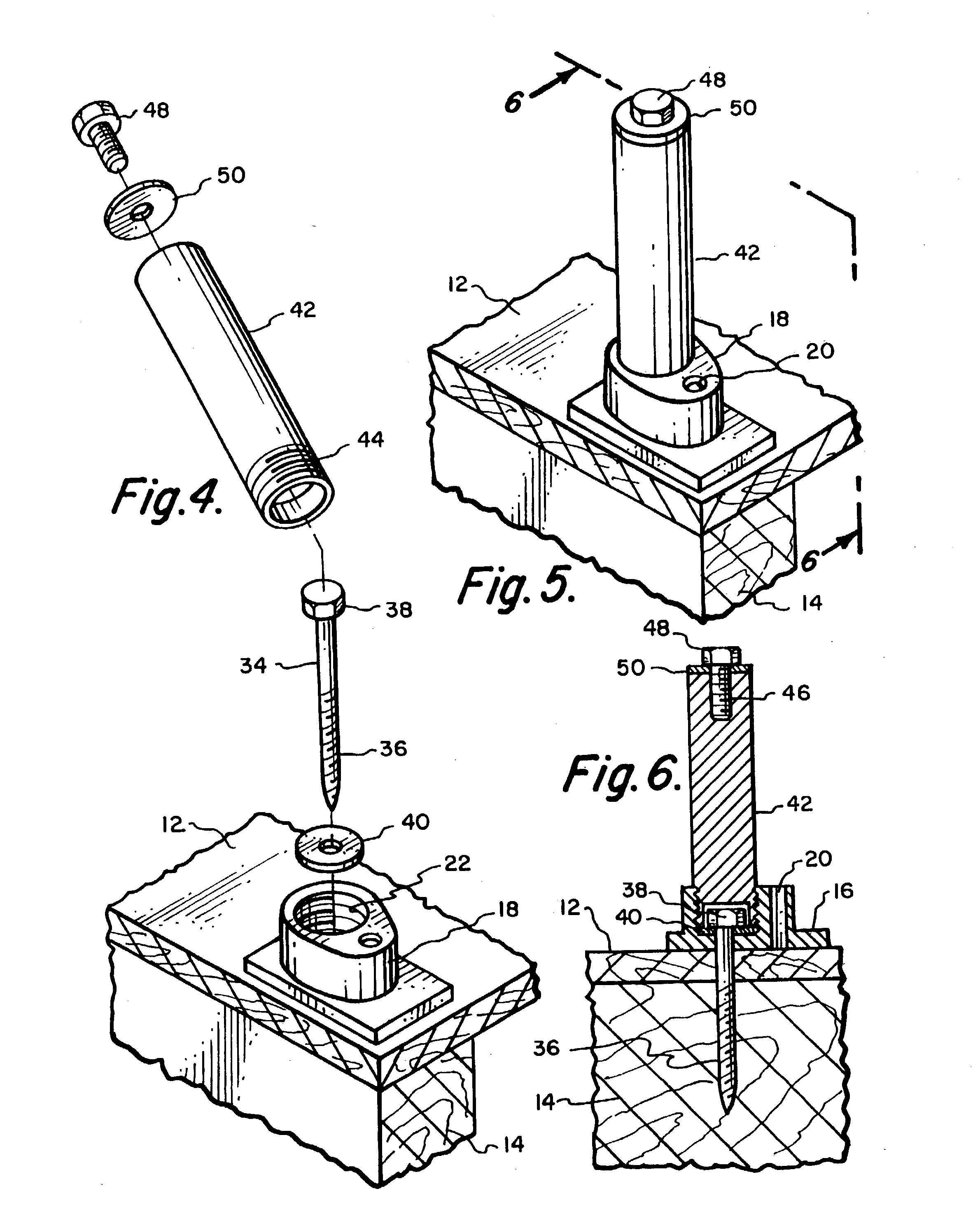Mounting system for supporting objects
a technology for mounting systems and supporting objects, which is applied in the direction of heat collector mounting/support, snow traps, lighting and heating apparatus, etc., can solve the problems of reducing the structural integrity of the mounting system, the risk of lag bolts being drills, and the satellite dish and solar panel
- Summary
- Abstract
- Description
- Claims
- Application Information
AI Technical Summary
Problems solved by technology
Method used
Image
Examples
second example
[0040] In a second example, the mounting system, instead of being fastened to a new roof rafter for support, is operatively fastened either: a) upon existing roofs or framework; or, b) over pipe supports or other support systems not necessarily located upon a roof. Here, the roof mount referred to earlier is not utilized although the other features described in paragraphs 2, 3, and 4 above pertain. For this example, the roof mount is replaced as the means to fasten the mounting system with an alternative means such as that described in U.S. Pat. No. 5,746,029 issued to Ullman and which is herein incorporated by reference.
[0041] Roof Mount (For Example 1)
[0042] In order to utilize my mounting system, a roof mount must first be fastened to a rafter. The roof mount can be manufactured from any material commonly used in the building trade to support objects upon a roof. Preferably, the mount is machined from aluminum and comprises a threaded cavity with an insertion opening for threadab...
PUM
 Login to View More
Login to View More Abstract
Description
Claims
Application Information
 Login to View More
Login to View More - R&D
- Intellectual Property
- Life Sciences
- Materials
- Tech Scout
- Unparalleled Data Quality
- Higher Quality Content
- 60% Fewer Hallucinations
Browse by: Latest US Patents, China's latest patents, Technical Efficacy Thesaurus, Application Domain, Technology Topic, Popular Technical Reports.
© 2025 PatSnap. All rights reserved.Legal|Privacy policy|Modern Slavery Act Transparency Statement|Sitemap|About US| Contact US: help@patsnap.com



